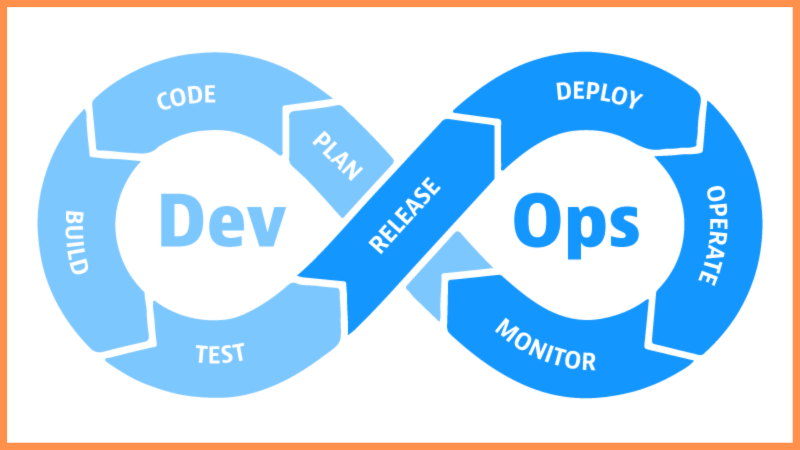DevOps, though exclusively focused on the improvement of software development businesses’ operations, are often misunderstood, especially at the initial stage of their adoption. This concept means different things in different companies, primarily due to the distinctions in focus and various tools’ choices for solving specific business needs.
But measuring the DevOps success is imperative for any business, as the large-scale transformation they require is usually expensive and long-term.
So, how can you determine whether the project succeeded or not? To keep the progress under control, every company has its own comprehensive list of DevOps metrics to measure the success of its operations. Here we offer a detailed guide on choosing your metrics and making sense of them.
Features of Actionable DevOps Metrics
Overall, there are dozens of metrics experts recommend, but your company may need a specific set thereof. How to choose the ones that fit your organization the best? We advise focusing on the following characteristics and checking these points before including the metric in your checklist.
i. Relevance
When you put DevOps tools in use, you probably pursue a specific business goal or close a performance gap. Thus, your DevOps approach may differ from the one in another company, and your metrics for measuring success should also match the initially set goals.
If your problem was a large number of errors, then the defect escape rate will be the number one metric of interest. If you struggled with deployment delays, then the deployment frequency is a metric to focus on, and so on.
ii. Measurability
There’s no sense in relying on abstract, subjective evaluations when assessing the impact of DevOps introduction in your company. Such measurements will be vague, giving no concrete data for analysis and further action. So, always choose parameters that have standardized values and can be re-measured over time.
iii. Traceability
When you want to measure something, you need to have a clear idea of what issue or parameter that metric points to. Otherwise, you won’t draw valuable conclusions even with accurate data in your hands.
iv. Actionability
What does the metric show to you? What problems can it highlight, and what improvements can it suggest? Every metric should be valuable for evidence-based decisions and strategic actions.
v. Reliability
The metric should be objective and out of the control of any team member. Otherwise, people in your team can easily manipulate the data or present their subjective views that distort or conceal the general perception of the situation.
What Metrics Won’t Do?
With the features of good metrics in mind, you should also learn a bit more about poor metric choices. This information can prevent DevOps beginners from relying on wrong or inaccurate data, which may lead to wrong, counter-productive decisions. So, bad DevOps metrics are usually:
a. Beyond the DevOps mindset
Make sure that you adopt the DevOps culture in its entirety to avoid non-DevOps metrics in performance measurement. Your values change, and the team’s performance is measured in entirely different terms. Thus, for instance, measuring compliance won’t help as it is not suitable for the DevOps development environment.
b. Focused on competition inside the team
Collaboration and competition often contradict each other. Thus, a company with a competitive culture rewarding winners and punishing losers will hardly succeed in the DevOps transition. If you understand this, don’t introduce metrics fostering competition in the team or between teams; it will kill all DevOps progress.
c. Individually rewarding
Appreciation of individual input is a metric irrelevant to DevOps, as the latter focuses on the communal outcome. So, even if a single person does the lion’s share of work in the team, it doesn’t necessarily mean that they are the best. The team’s added value to the end-user experience becomes the top priority when you want to integrate the DevOps approach.
The Top 6 Metrics to Focus On
#1 Lead Time
Lead time is the key metric in most speed-focused businesses. It measures the amount of time your team needs to write and deploy the code. This metric is highly informative for future planning, showing how much time a coder will need to complete a specific task.
#2 Frequency of Deployment
Every development company focuses on more frequent code deployments, which is typically achieved by reducing the deployment size. The latter simplifies the testing and release operations. However, this metric is more complex than one might think.
To get to the core of your deployment statistics, you need to understand the number of production and non-production deployments, factor in the number of deployments to QA checks before the final release. Once these metrics are collected and analyzed in a union, you will understand how this metric affects your defect escape rates.
#3 Defect Escape Rate
The QA check at the pre-production stage is an excellent filter for ensuring that defective code doesn’t get to production. However, companies focused on fast delivery often skip the QA stage and launch poorly working code without proper testing. The defect escape rate metric will give you an idea of how many defective deployments are there; it is calculated by dividing the total number of deployments by the number of defective ones identified at the QA stage.
#4 Error Rates
Unfortunately, errors are unavoidable in the software development world. Still, you can derive tons of valuable data from analyzing your errors. Identify their types, the stage at which they occur most frequently, and look for spikes in error rates. These metrics will help you spot systemic problems and oust them to achieve sizable performance improvements.
#5 Mean time to detection (MTTD)
Errors can go unnoticed for a certain period, and the longer that period is, the greater risks they pose. Thus, it would be best to keep the MTTD metric under tight control to minimize the time for error detection and correction. Otherwise, your system may suffer downtime or expose its critical vulnerabilities, which is very risky.
Always Measure Your Progress
As you can see, DevOps can turn into a concrete and measurable issue if you use proper metrics for its assessment. Invest time and effort into picking the right metrics for your business, even if you decide to get a devops automation service. In this way, you will always be in complete control of your operations, introducing adjustments and corrections where necessary.
Read Also:























